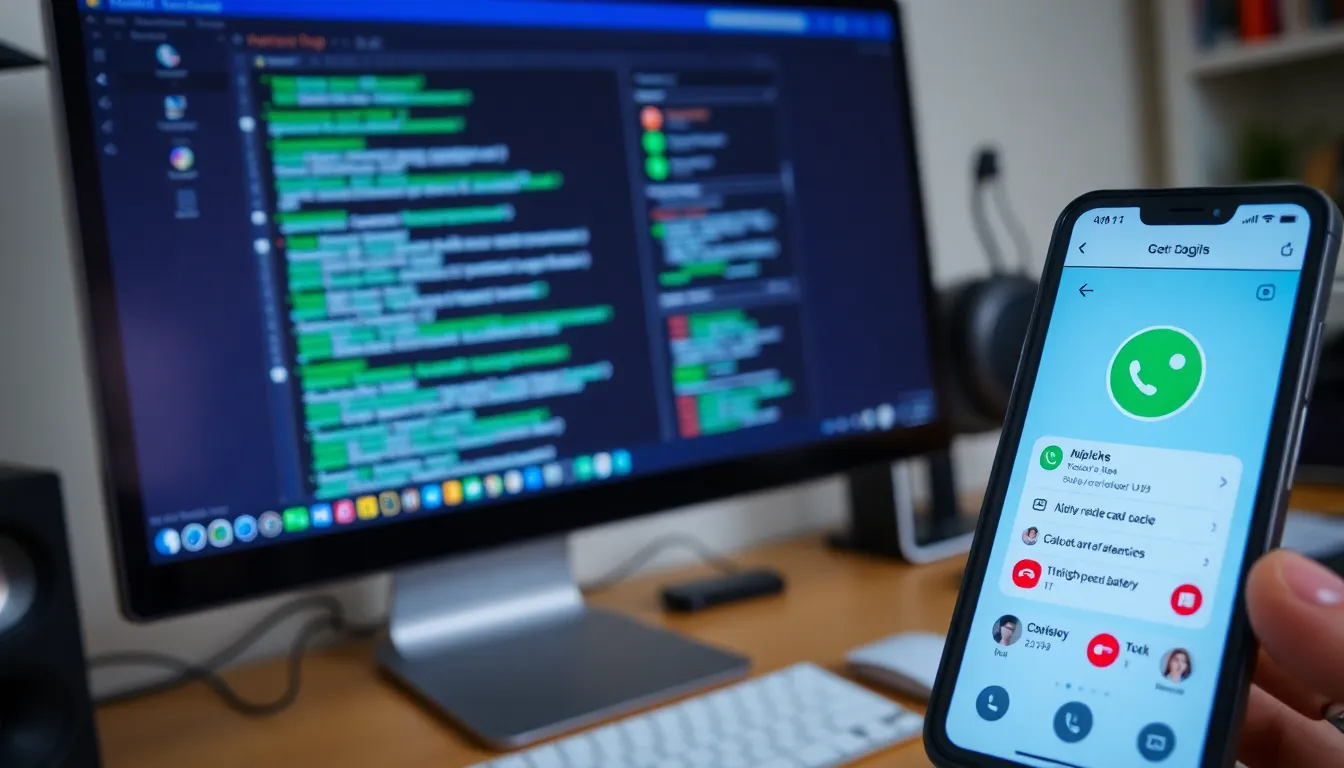Ever stumbled upon “day.miscallfrm” in your file system and wondered what on earth it is? You’re not alone! This mysterious file has left many users scratching their heads while navigating through their device directories.
Table of Contents
ToggleWhat Is Day.miscallfrm and Why Should You Be Concerned?
Day.miscallfrm is a system file found in iOS devices, primarily associated with the Phone app’s call functionality. This file stores data related to missed calls, including timestamps, caller information, and other metadata needed for your device to display call history properly. Located in the system directory, it’s part of Apple’s core iOS architecture and not meant for direct user interaction.
Users should exercise caution when encountering this file through file browsers or jailbroken devices. Modifying, deleting, or tampering with day.miscallfrm can disrupt your iPhone’s ability to log missed calls correctly, potentially causing call notification issues or incomplete call history. Some third-party applications claim to offer tools for manipulating this file to clear call logs permanently, but these modifications fall outside Apple’s supported operations.
Security researchers have identified instances where malicious apps target system files like day.miscallfrm to gain unauthorized access to call records. These exploits can expose sensitive communication data, including timestamps and contact information from missed calls. Privacy-conscious users should monitor any unusual behavior in their call history functionality, as changes might indicate system file tampering.
Apple’s encryption and permission systems typically protect this file from unauthorized access on non-jailbroken devices. The file operates as part of iOS’s closed ecosystem, making it generally inaccessible through standard means unless your device has been modified to allow root access.
Common Symptoms of a Day.miscallfrm Infection
Day.miscallfrm infections manifest through distinctive behavioral changes in your device’s performance and functionality. These symptoms vary depending on the operating system and can range from subtle performance issues to severe privacy breaches.
Warning Signs on Windows Systems
Windows users encountering day.miscallfrm typically notice unexpected call logs appearing in applications never used for telecommunications. System slowdowns occur particularly when using communication apps or accessing contact information. Users report persistent permission requests from unfamiliar applications seeking access to call history and contacts. Battery drainage accelerates dramatically even when the device is idle. Suspicious outbound connections appear in network monitoring tools, often connecting to servers in unusual geographic locations. Storage space diminishes inexplicably as the infection creates hidden data caches to store intercepted communications. Additionally, antivirus software may detect unusual modifications to system registry entries related to telephony functions.
How Day.miscallfrm Affects Mac Devices
Mac infections present uniquely compared to Windows manifestations. Mac users experience Calendar app glitches with phantom entries resembling missed call notifications. Spotlight search results display unfamiliar phone numbers when searching for contacts or recent communications. The Messages app crashes when attempting to access conversation history with specific contacts. Users observe mysterious terminal processes with names containing “day” or “call” running in Activity Monitor. iCloud synchronization fails specifically for contact and call data while other data types sync normally. Safari develops unusual behavior when visiting telecommunications websites or VoIP services. Privacy setting notifications appear repeatedly despite no changes being made to system configurations. Mac-specific file integrity monitoring tools flag unexpected modifications to system communication directories.
How Day.miscallfrm Spreads to Your Computer
Day.miscallfrm infections typically spread through several sophisticated distribution channels that bypass traditional security measures. These infection vectors exploit vulnerabilities in both iOS and computer operating systems, creating pathways for unauthorized access to sensitive call data.
Common Distribution Methods
Malicious actors distribute day.miscallfrm infections primarily through compromised app store listings that mimic legitimate applications. Phishing campaigns often deliver the payload via specially crafted emails containing links to infected websites or attachments. Drive-by downloads occur when users visit compromised websites that automatically download the malware without user interaction. Syncing infected iOS backups with computers transfers the malicious file during routine data exchanges. USB drives and external storage devices serve as physical vectors for spreading the infection across multiple devices. Social engineering tactics trick users into granting permissions that allow the malware to install itself by exploiting trust relationships.
Vulnerable Applications and Security Holes
Outdated iTunes and iCloud clients contain exploitable security flaws that malware creators target to gain access to system files. Third-party file management tools often lack proper permission controls, creating entry points for day.miscallfrm infections. Browser vulnerabilities in Safari, Chrome, and Firefox enable attackers to inject malicious code during iOS-related downloads. Jailbroken devices eliminate critical security barriers that normally protect system files like day.miscallfrm. PDF readers with JavaScript capabilities can execute hidden code when opening seemingly innocent documents. Messaging apps sometimes contain zero-day exploits that bypass security protocols, allowing remote installation of malicious files. Older iOS versions running unpatched software remain particularly susceptible to these infiltration methods.
The Potential Dangers of Day.miscallfrm
Day.miscallfrm poses significant threats beyond its seemingly innocuous function as an iOS system file. When compromised, this file becomes a gateway for malicious actors to exploit sensitive data and disrupt normal device operations.
Data Security Risks
Day.miscallfrm contains comprehensive call records that include phone numbers, timestamps, and potentially call durations. Attackers who gain access to this file can harvest contact information from unsuspecting users, creating opportunities for targeted phishing campaigns. Personal communication patterns revealed through this data enable sophisticated social engineering attacks that bypass traditional security measures. Security researchers have documented instances where compromised day.miscallfrm files facilitated identity theft by providing criminals with verification call information. The file’s connection to the iOS Phone app grants attackers visibility into users’ professional and personal relationships, creating serious privacy violations. Malware specifically designed to target this system file often transmits the extracted data to remote servers without triggering standard security alerts.
System Performance Issues
Corrupted day.miscallfrm files generate cascading technical problems throughout iOS devices. Users frequently report phantom call notifications appearing at random intervals, creating disruptive user experiences. Background processes attempting to access damaged file entries consume excessive CPU resources, resulting in noticeable battery drain and device overheating. Applications dependent on call history APIs experience frequent crashes when interacting with compromised day.miscallfrm data. iOS devices exhibit synchronization failures between local and iCloud call logs, creating inconsistent communication records across platforms. Network performance suffers as affected devices repeatedly attempt to validate corrupted call data against carrier databases. The operating system allocates increasing memory resources to repair file integrity issues, gradually degrading overall system responsiveness. These performance degradations often appear before users recognize the security implications, allowing infections to remain undetected during critical early stages.
How to Remove Day.miscallfrm From Your Device
Removing day.miscallfrm infections requires a systematic approach to eliminate all traces of malware while preserving essential system functionality. The following methods provide effective solutions for both manual cleanup and software-assisted removal of this potentially compromised iOS system file.
Manual Removal Steps
Manual removal of day.miscallfrm infections starts with backing up important data through iCloud or iTunes. First, reset network settings by navigating to Settings > General > Reset > Reset Network Settings. Next, clear browser caches and data in Safari through Settings > Safari > Clear History and Website Data. Remove suspicious profiles by checking Settings > General > Profiles & Device Management and deleting any unfamiliar entries. Restore iOS to factory settings as a last resort by connecting to a computer with iTunes, entering recovery mode, and selecting “Restore.” After restoration, monitor your device for any recurring symptoms before restoring your backed-up data.
Using Anti-Malware Software
Anti-malware software provides a more streamlined approach to removing day.miscallfrm infections. Premium security applications like Malwarebytes for iOS, Norton Mobile Security, and Lookout Security scan your device thoroughly for malicious modifications to system files. These applications detect unusual permission settings, identify suspicious processes accessing call data, and remove infection vectors without damaging legitimate system functions. Many security tools also include real-time monitoring features that prevent future infections by blocking malicious connection attempts. For optimal results, update your chosen security software to its latest version before scanning, as recent threat definitions significantly improve detection rates for newly discovered day.miscallfrm exploitation techniques.
Preventing Future Day.miscallfrm Infections
Preventing day.miscallfrm infections requires implementing proactive security measures that protect both iOS devices and computers that sync with them. Securing this critical system file demands a multi-layered approach covering both essential practices and specialized protection tools.
Essential Security Practices
Maintaining current software serves as the foundation for day.miscallfrm protection, with regular iOS updates addressing security vulnerabilities before malicious actors can exploit them. Strong, unique passwords for Apple ID accounts prevent unauthorized access to backups containing sensitive system files. Two-factor authentication adds an essential security layer for all Apple services, requiring verification beyond passwords. Users should download apps exclusively from the official App Store, avoiding third-party sources that frequently distribute compromised applications. Regular device backups through iCloud or encrypted iTunes backups preserve data integrity while providing recovery options. Network connections require scrutiny—public Wi-Fi networks present significant risks unless secured with a VPN. Device encryption, enabled by default on most iOS devices, protects against physical access threats. Limiting permissions for applications reduces the attack surface for malware targeting system files.
Recommended Protection Tools
Mobile security apps like Lookout Security provide real-time monitoring specifically designed to detect suspicious activities targeting system files including day.miscallfrm. Bitdefender Mobile Security offers comprehensive protection with its anti-phishing capabilities that block malicious websites attempting to distribute infected files. Network analyzers such as Guardian Firewall monitor outbound connections from iOS devices, flagging suspicious attempts to transmit call data. Password managers including 1Password or LastPass generate and store complex credentials, preventing account compromises that lead to unauthorized file access. VPN services like NordVPN or ExpressVPN create encrypted tunnels for data transmission, protecting sensitive information when syncing devices over public networks. Content blockers for Safari effectively prevent malvertising campaigns that deliver day.miscallfrm infections through drive-by downloads. File integrity monitors alert users to unauthorized modifications of system files. Anti-malware solutions for computers that sync with iOS devices complete the security ecosystem by preventing cross-device infection vectors.
Conclusion
The day.miscallfrm file plays a vital role in iOS call functionality while presenting potential security vulnerabilities if compromised. Understanding this system component helps users recognize abnormal behavior and take appropriate action when necessary.
By implementing the recommended preventive measures and security tools this article outlines users can significantly reduce their risk exposure. Remember that vigilance is key – keeping software updated practicing good password hygiene and monitoring device behavior for unusual activity will provide the strongest defense.
Ultimately protecting your iOS device requires a balanced approach of technical safeguards and mindful usage habits. With these strategies in place users can minimize the threats associated with day.miscallfrm vulnerabilities while maintaining their device’s performance and security.



